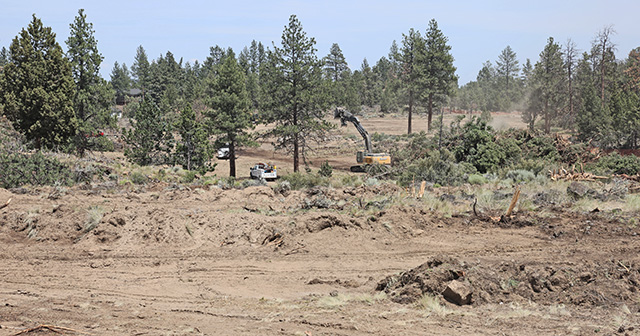Planting carrots in Central Oregon can be rewarding
Published 12:00 am Sunday, May 5, 2019

- Carrots are a versatile and healthy crop that does well in this area.(Barb Gonzalez/Bulletin file photo)
With crossed fingers and bated breath, I await the repair of my irrigation pump. I am ready to plant my carrots and, like a kid, I want to do it now. The optimum soil temperature for carrot seed germination is between 45 degrees and 85 degrees. My soil temperature is at 60 degrees. At that temperature germination, it should take place in 10 days. When the soil temperature reaches 68 degrees, carrot seeds germinate in seven days. It pays to be patient. I am just anxious to again experience an aching back and broken fingernails.
Carrots are one of the most versatile root crops to include in your garden. They are delicious raw or cooked, and they deliver an impressive list of nutrients, especially beta carotene. Raw carrots make a healthy sweet snack, add crunch to salads or can be juiced to create nutritious drinks. What would a hardy winter stew be without carrots? Cooked carrots are featured in many savory and sweet dishes, plus there is always the favorite carrot cake, muffins and carrot cookies. Bagged commercial carrots cannot begin to compare to the full richness of a home-grown variety.
Carrots were cultivated in the Middle East for more than 3,000 years — first being grown for their greens and seeds, which resemble celery seeds in size and flavor.
The popular orange vegetable we know today can be traced to Dutch plant breeders who focused on developing stout, sweet roots.
Did you know that the major percentage of U.S. domestic market carrot variety seed production is grown in the Madras and Culver area? Smaller percentages for the U.S. market are also being grown in Crook and Deschutes counties. A significant percentage of seed production reaches the global market.
According to an Oregon State University fact sheet, most of the carrot seed is hybrid with male and female plants that cross-pollinate through honeybees brought in to increase seed vigor.
The seed production fields are grown from seeds planted in August or from roots called stecklings planted in the spring. Harvest takes place in September.
Carrots grow best in moderate weather in a sunny location. A spring planting can be followed by a summer sowing for harvest in fall. Carrots that mature in cool fall soil develop more sweetness.
The soil should be free of rocks, clods or other obstructions to avoid misshapen roots. Raised beds are ideal because they increase the depth of available root space. Deeply dug in-ground beds (12 inches deep) also benefit carrots by providing cooler soil temperatures below the surface.
Rake the soil and mark off rows, incorporate a balanced fertilizer into the bottom of a 4-inch-deep furrow. Avoid high nitrogen fertilizer (first number is higher than the other two), which will cause the roots to fork. Refill the furrow with loose soil. Plant carrot seeds 1⁄4-inch deep and 1 inch apart. Rows should be spaced 8 inches apart.
Maintaining moisture is critical to germination. Rows can be covered with row cover until germination takes place. Carrots require attentive weeding and need to be thinned when seedlings reach 2 inches. Thin to approximately 3 inches apart to develop straight roots of good size. Rather than thin the rows by pulling the seedlings out, which disrupts the roots of nearby seedlings, cut the seedling at ground level. Small craft scissors or cuticle scissors work perfectly. Fertilize lightly when about 8 inches tall.
Carrot rust fly can be a problem. Onions are often interplanted with carrots. The smell of the onion is believed to deter the carrot fly. The fly can also be fenced out with netting, plastic or row cover. The barrier should be at least 2 feet high. Earth up the soil at the base. Female carrot flies seem incapable of flying any higher than 18 inches.
Black, yellow and green parsley worms are often seen munching carrot foliage. These are the larvae of eastern black swallowtail butterflies, which are valuable pollinators, so many gardeners tolerate light damage. You can also plant parsley nearby to lure the caterpillars away.
The big payoff comes at harvest time — evidenced by their root tops pushing up at the soil’s surface. Carefully loosen the outside of the row with a digging fork and pull up the roots. Cut the foliage to 1⁄4 inch and rinse the roots with water. Dry before storing them in plastic bags in the refrigerator for up to 3 months. In Central Oregon, I have packed carrots in a 5 gallon bucket layered with damp sand and stored in the unheated garage.
— Reporter: douville@bendbroadband.com







